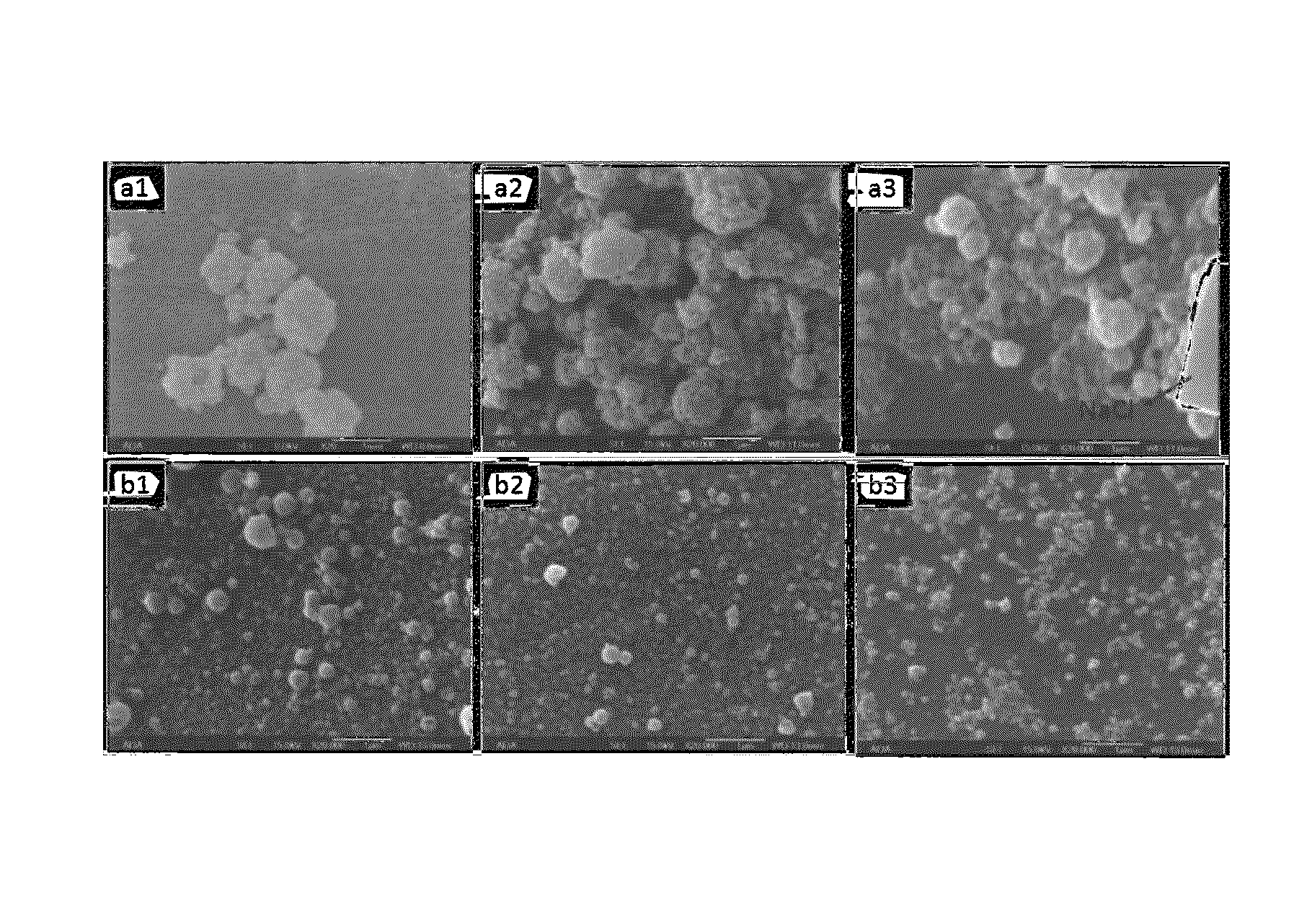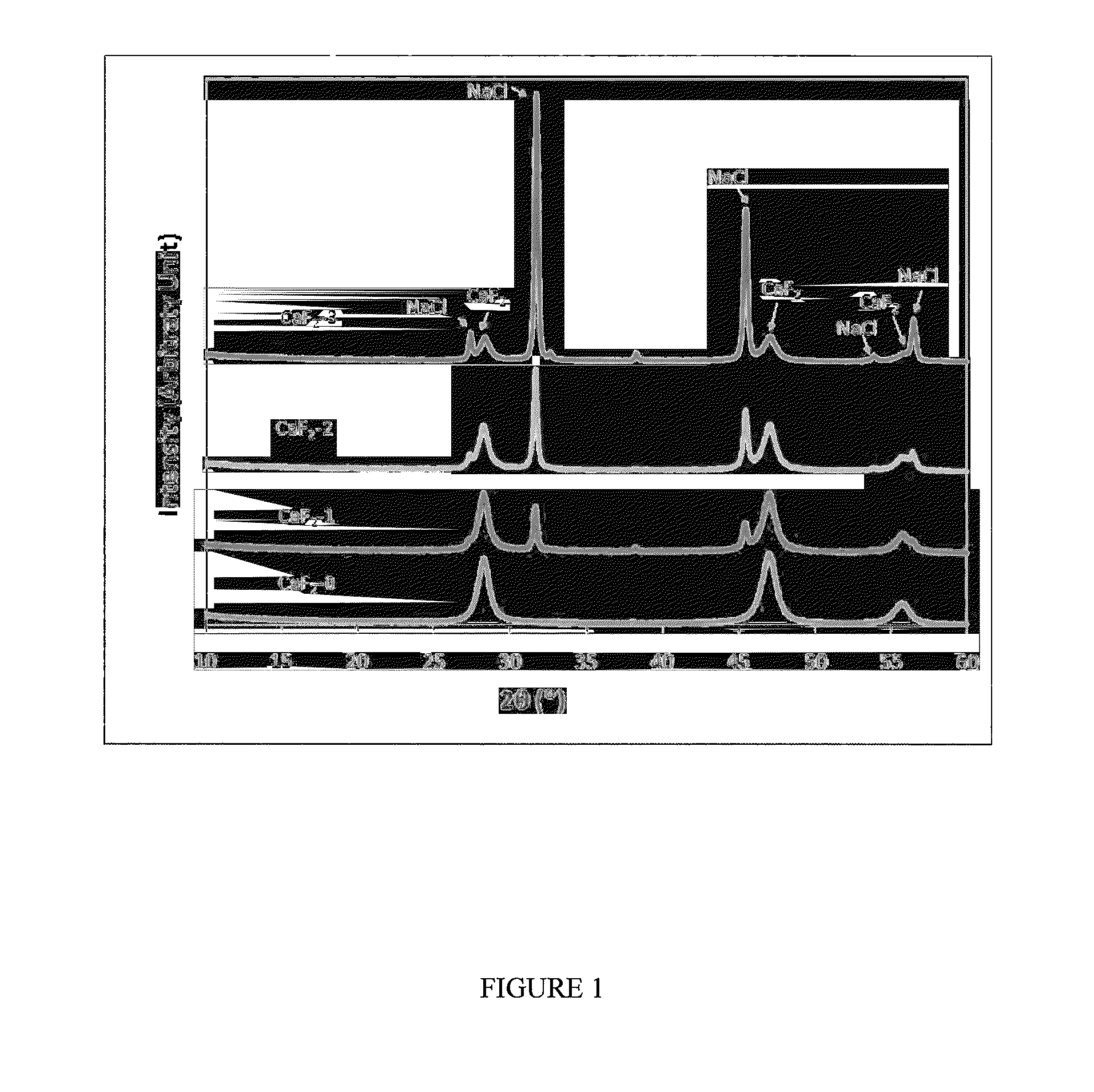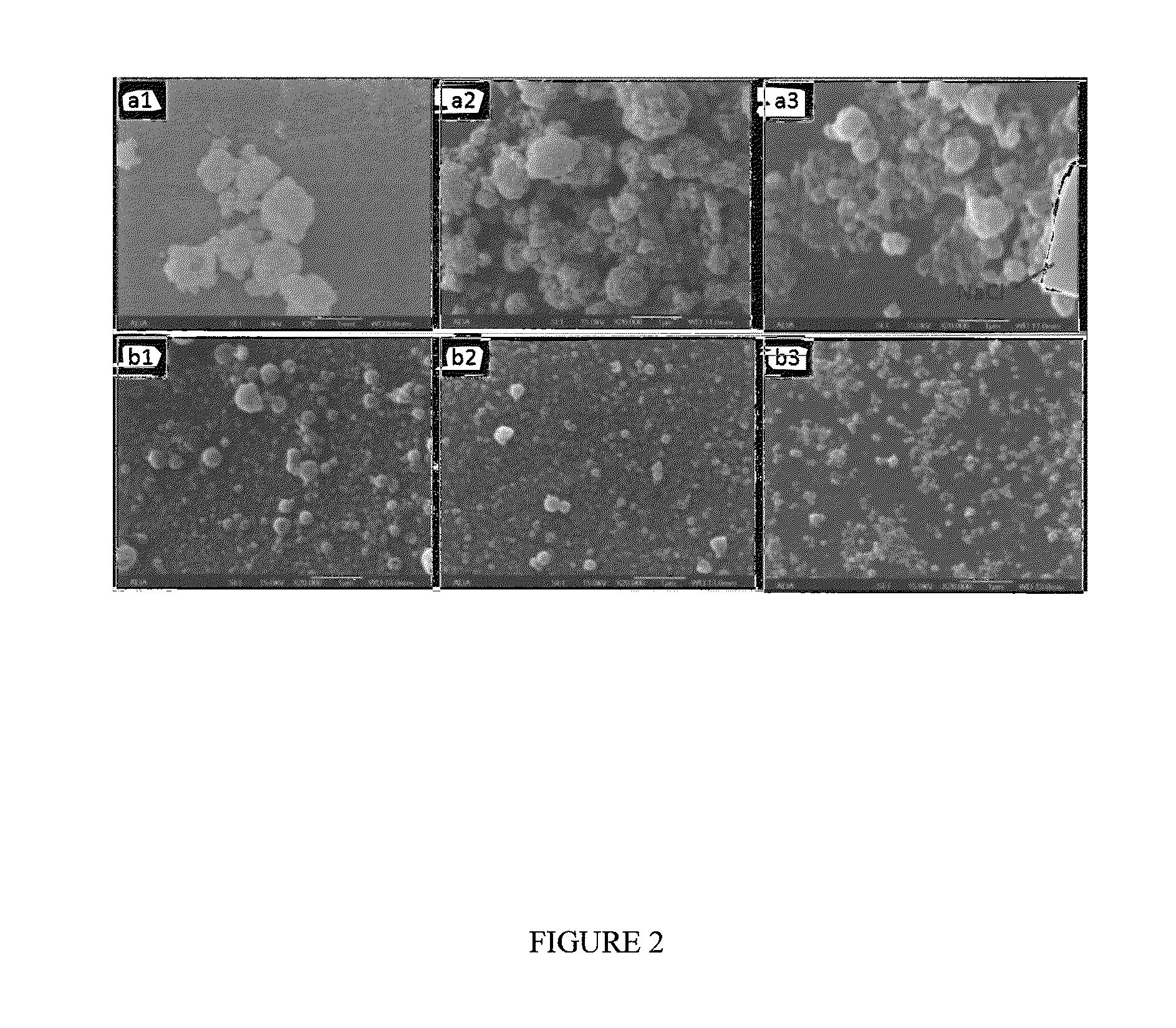Method for preparation of well-dispersed, discrete nanoparticles by spray drying techniques
a nanoparticle and spray drying technology, which is applied in the direction of magnesium compounds, chemistry apparatus and processes, and magnesium halides, etc., can solve the problems of agglomeration of nanoparticles due either to the preparation process or post synthesis treatment, and the formation of very small amounts of cafsub>2 /sub>deposits, etc., to achieve the effect of efficient calcium caf2 particles, reducing agglomeration, and increasing the remineralization effect of fluorid
- Summary
- Abstract
- Description
- Claims
- Application Information
AI Technical Summary
Benefits of technology
Problems solved by technology
Method used
Image
Examples
example a
Preparation of Nano CaF2 / NaCl Particles
[0020]The nano CaF2 / NaCl particles were prepared using the spray drying system generally described in On the role of calcium fluoride in the cariostatic mechanism of fluoride. Acta Odontol Scan 1988; 46:341-345, incorporated herewith by reference In the preparation of pure nano CaF2, a 4 mmol / L Ca(OH)2 solution and an 8 mmol / L NH4F solution were, following preparation, simultaneously fed to the 2-liquid nozzle of a spray drying apparatus. To incorporate NaCl, NaCl of concentrations of (1.4, and 16) mmol / L were added to both the NH4F and Ca (OH2) solutions, respectively. This led to the formation of (CaF2+NaCl) composites with CaF2 / NaCl molar equivalent ratios of 4:1, 1:1, and 1:4, or mass ratios 5.34, 1.31 and 0.33 (Table 1). Pure nano CaF2 particles were also prepared as the control. All solutions were prepared using reagent grade chemicals and mole ratios of CaF2 / NaCl in the range of 10:1 to 1:10 are considered within the scope of the process...
example b
Preparation of Nano Amorphous HA (Hydroxyapatite)
[0037]Nano particles of a composite consisting of HA, NaCl and Brilliant blue dye (CAS Registry Number: 3844-45-9) were synthesized by simultaneously feeding to a two liquid nozzle (1) a solution containing 4 mM Ca(OH)2 and 3.44 mM NaCl, and (2) a solution containing 2.4 mM H3PO4 and 0.032 g / L of blue dye and spray dried as previously described. The product would have a HA:NaCl mass ratio of 2:1, and the blue dye content of 5 mass %. The collected product was twice washed in distilled water (10 mg / mL) to dissolve the NaCl followed by centrifugation. The supernatant was essentially colorless (FIG. 6), indicating that little or no dye was incorporated into the NaCl phase during the spray drying process. This was expected because large dye molecule is likely to be excluded from NaCl, which has a simple and tight crystal structure. In contrast, the nano amorphous HA particles showed a dark blue color indicating that the large dye molecule...
PUM
| Property | Measurement | Unit |
|---|---|---|
| particle size | aaaaa | aaaaa |
| size | aaaaa | aaaaa |
| size | aaaaa | aaaaa |
Abstract
Description
Claims
Application Information
 Login to View More
Login to View More - R&D
- Intellectual Property
- Life Sciences
- Materials
- Tech Scout
- Unparalleled Data Quality
- Higher Quality Content
- 60% Fewer Hallucinations
Browse by: Latest US Patents, China's latest patents, Technical Efficacy Thesaurus, Application Domain, Technology Topic, Popular Technical Reports.
© 2025 PatSnap. All rights reserved.Legal|Privacy policy|Modern Slavery Act Transparency Statement|Sitemap|About US| Contact US: help@patsnap.com



